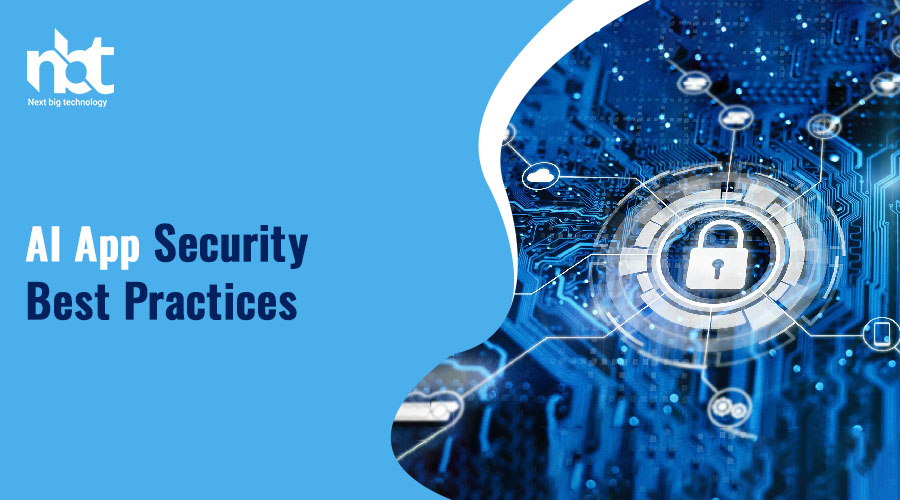Table of Contents
Introduction
In today’s rapidly evolving technological landscape, the integration of artificial intelligence (AI) into applications has become commonplace. However, with the increased reliance on AI comes the critical need for robust security measures. This article delves into the best practices for securing AI applications, ensuring a proactive defense against potential vulnerabilities.
Understanding AI App Vulnerabilities
AI applications, like any other software, are susceptible to various vulnerabilities. From code injection to data manipulation, understanding these vulnerabilities is crucial for implementing effective security measures. Real-world examples, such as the infamous AI-powered chatbot breach, serve as stark reminders of the potential risks.
Common Threats in AI App Security
Delving deeper, this section explores common threats faced by AI applications. Whether it’s adversarial attacks or unauthorized access to sensitive data, the consequences of security breaches can be severe. Highlighting these threats underscores the importance of a comprehensive security strategy.
AI App Security Best Practices
To mitigate these threats, implementing best practices is paramount. This section provides practical insights into securing AI applications. From robust authentication mechanisms to regular system updates, each practice is a building block in creating a fortified defense against potential cyber threats.
Role of User Education in AI App Security
Beyond technical measures, user education plays a pivotal role in AI app security. End-users need to be aware of potential risks and the importance of following secure practices. This section explores strategies for creating awareness and fostering a security-conscious user base.
Regulatory Compliance in AI Security
Ensuring AI applications comply with relevant regulations and standards is non-negotiable. This section provides an overview of the legal landscape surrounding AI security and emphasizes the importance of adherence to compliance requirements.
Integration of AI Security in Development Lifecycle
Security shouldn’t be an afterthought; it should be integrated from the inception of development. This section outlines the significance of incorporating security measures throughout the entire development lifecycle, coupled with regular security audits.
The Human Factor in AI App Security
Even with advanced technology, the human element remains a potential weak link in security. This section addresses insider threats and human errors, advocating for ongoing training to enhance the security posture of developers and personnel.
Emerging Technologies and AI Security
As technology advances, so do potential security challenges. This section explores the intersection of emerging technologies and AI security, offering insights into anticipating and addressing future concerns.
Case Studies on Successful AI App Security Implementation
Drawing from real-world success stories, this section examines instances where AI app security was effectively implemented. By learning from these cases, developers can glean practical strategies for their own applications.
Challenges in Implementing AI Security Best Practices
Despite the importance of security measures, challenges in implementation are inevitable. This section identifies common hurdles and provides strategies for overcoming them, ensuring a smoother integration of security practices.
Continuous Improvement in AI Security
The dynamic nature of cyber threats requires a continuous improvement mindset. This section emphasizes the need for ongoing adaptation and evolution of security measures to stay ahead of potential risks.
Conclusion
In conclusion, securing AI applications is a multifaceted task that requires a combination of technical measures, user education, and regulatory compliance. As technology evolves, so do potential threats, making continuous improvement and vigilance crucial for safeguarding AI applications and their users.
FAQs
- What are the immediate steps to enhance AI app security?
- Immediate steps include conducting a thorough security audit, implementing multi-factor authentication, and ensuring regular software updates.
- How often should security audits be conducted for AI applications?
- Security audits should be conducted regularly, at least annually, and more frequently for applications handling sensitive data.
- Can AI security be a hindrance to user experience?
- While security measures are essential, they should be implemented in a way that minimally impacts user experience. Striking the right balance is key.
- What role does encryption play in securing AI app data?
- Encryption is crucial for protecting sensitive data in transit and at rest, adding an extra layer of security against unauthorized access.
- How can developers stay updated on the latest AI security threats?
- Staying informed through industry publications, attending conferences, and participating in online forums are effective ways for developers to stay abreast of the latest AI security threats.
Thanks for reading our post “AI App Security Best Practices”. Please connect with us to know more about “AI App Security Best Practices.














